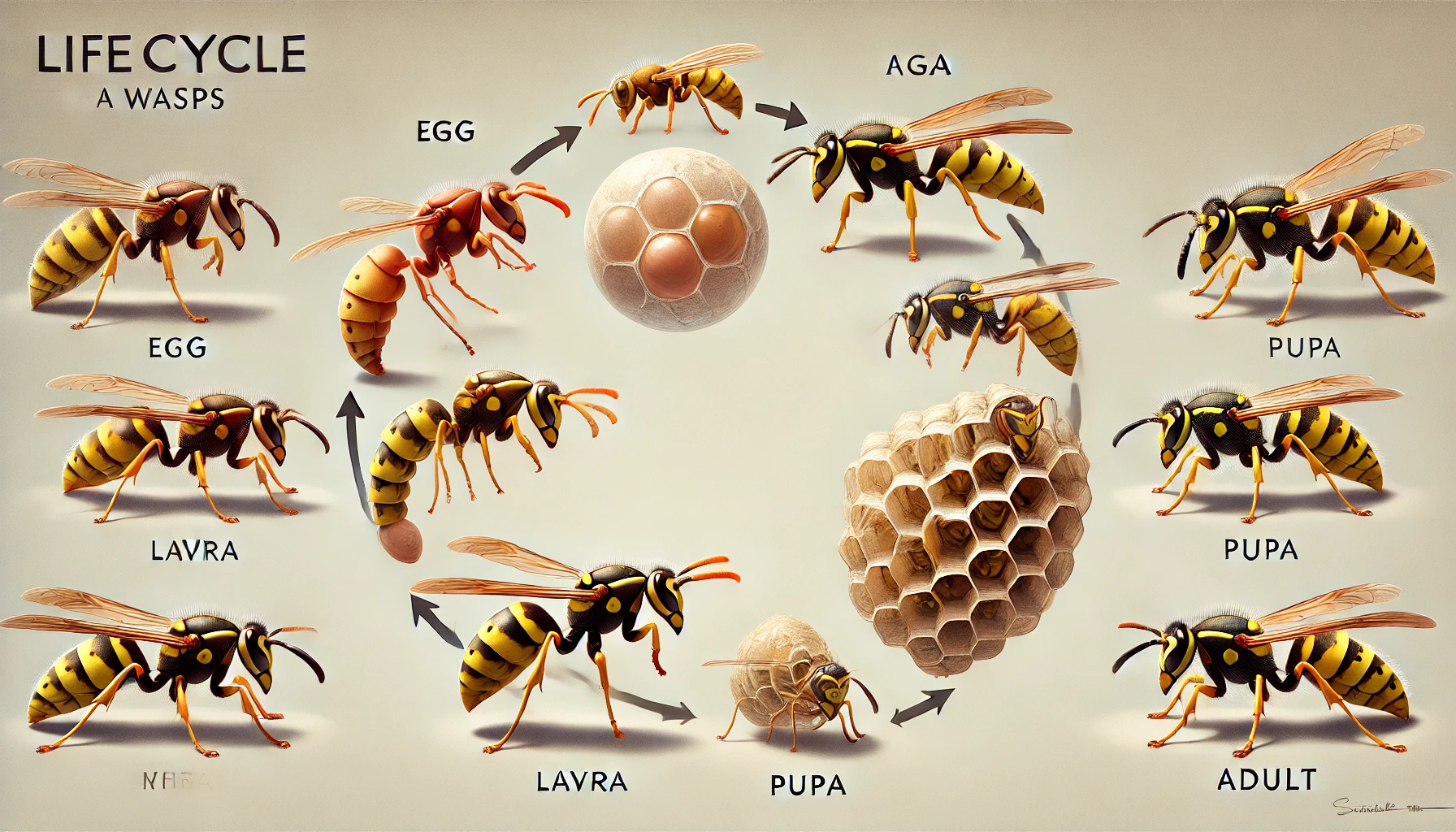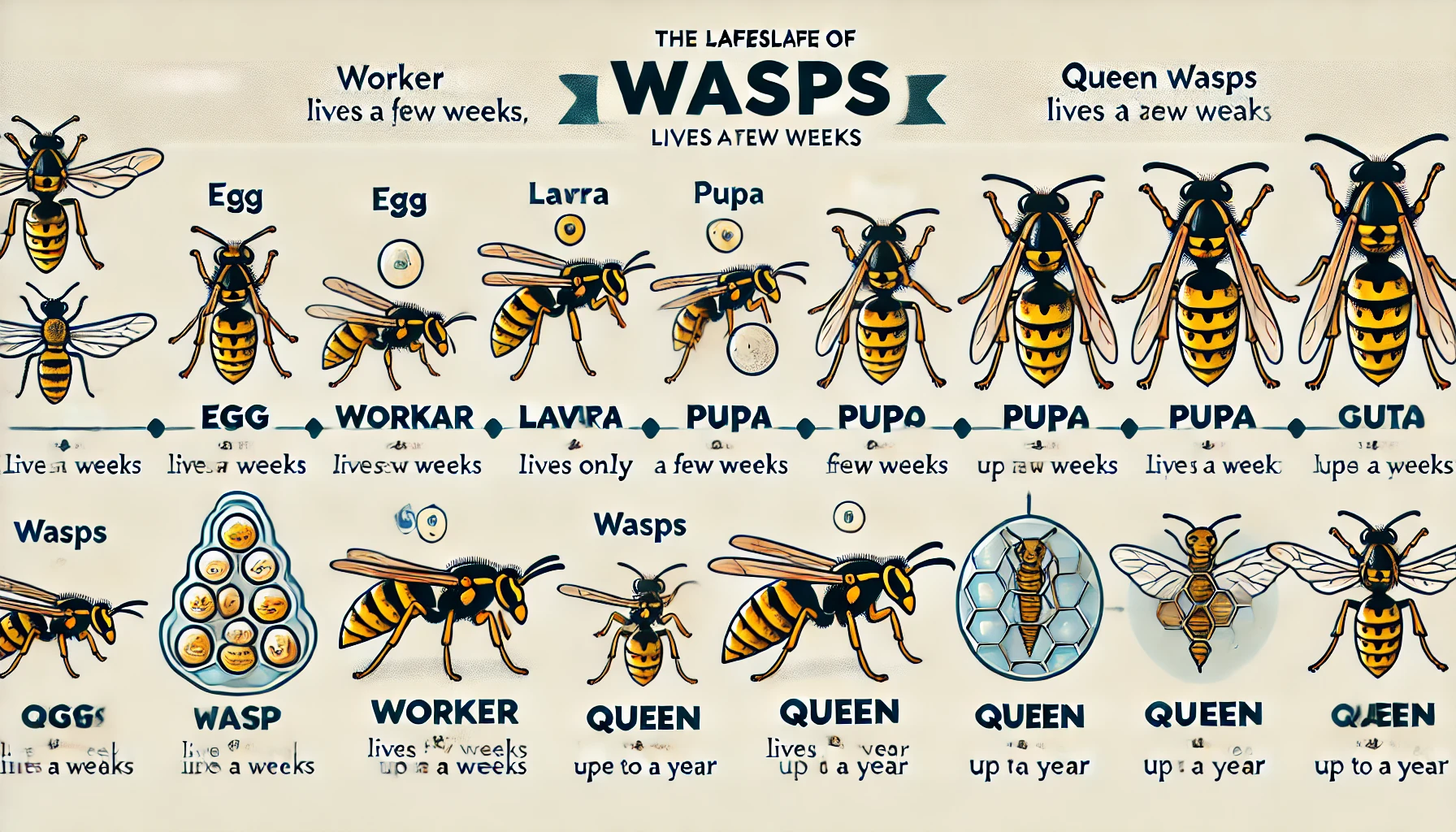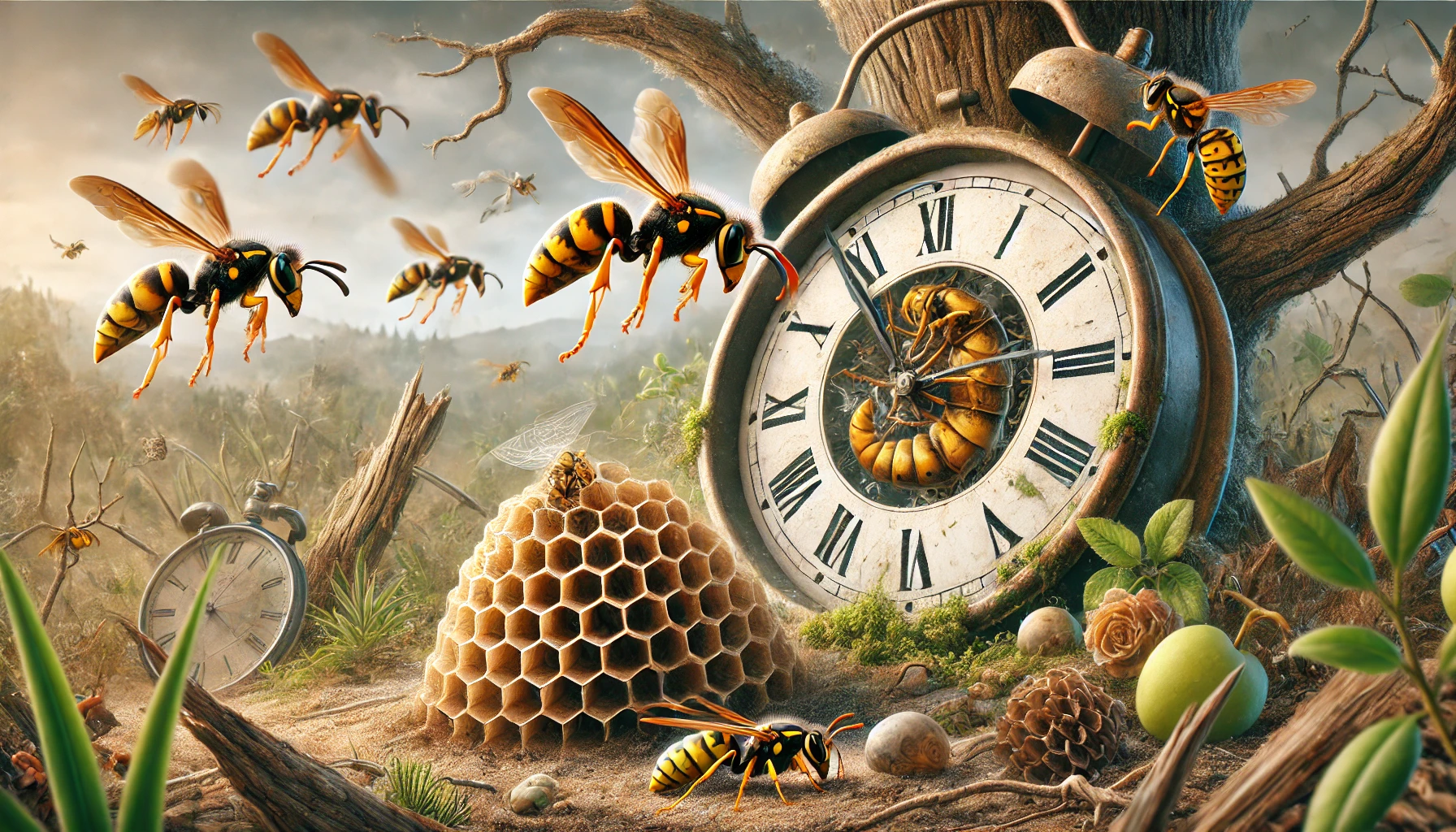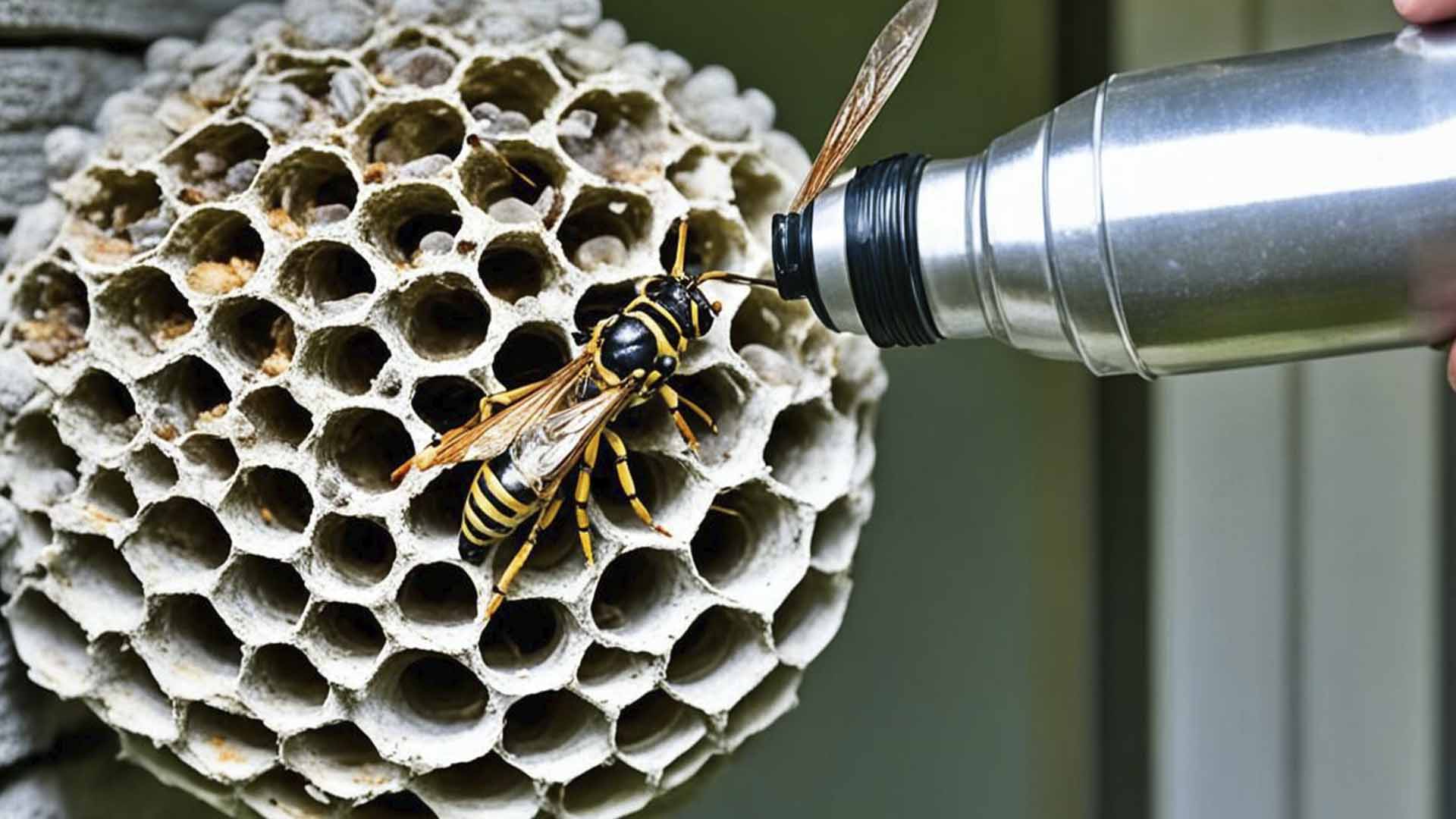Key Takeaways
- Wasps go through egg, larval, pupal, and adult stages.
- Worker and male wasps live just a few weeks, queens up to a year.
- Climate, food availability, predators, and shelter significantly affect wasp lifespans.
- Early nest management, cleanliness, proper traps, home maintenance, and professional pest control are effective wasp strategies.
 Have you ever thought of a time that you were having a pleasant afternoon at your outdoors and suddenly got interrupted by buzzing wasps and then got irritated? You see, most of us have. But have you ever wondered how long these tiny intruders stick around? You know what?
Understanding their lifecycle can help you manage them way more effectively. So, let’s take a closer look.
Have you ever thought of a time that you were having a pleasant afternoon at your outdoors and suddenly got interrupted by buzzing wasps and then got irritated? You see, most of us have. But have you ever wondered how long these tiny intruders stick around? You know what?
Understanding their lifecycle can help you manage them way more effectively. So, let’s take a closer look.
First Things First: The Lifecycle of a Wasp
Let’s shed light on this before we get into lifespans: wasps aren’t born buzzing around your barbecue—they start their journey as tiny eggs. Here’s how their life journey spreads:

Not getting a solution?
Get your free pest control estimate today!So, How Long Do These Wasps Live?
To be honest, different wasps age differently according to the value provided by them:- Worker Wasps These small little insects are always in a work mode—no days off. As a result, their adult life only spans just 2-4 weeks. They are short and intense, but ultimately theses workers are the ultimate hustle culture insects. They spend their small existence tirelessly collecting food, feeding larvae, guarding the colony, and preserving the nest—no wonder they burn out at a quick manner. Male Wasps (Drones) You’d think drones would have it easy, but their lifespan isn’t much better. They hang around for about 2-4 weeks, where their work is just mating and dying shortly thereafter. Tough break, guys. Male wasps don’t even have stingers, which makes them vulnerable against those predators. Once their mating duties are completed, they’re out of chance. Queen Wasps The queen, meanwhile, can live up to a year. After waking up from hibernation, she builds her nest, lays eggs all summer, and eventually dies come fall. The catch? She leaves behind a fresh batch of fertilized queens to continue her legacy next spring. It’s almost poetic. Queens are the backbone of the colony, and their survival through winter is crucial. They hide in sheltered spots like attics, garages, or tree bark to safely overwinter. Solitary Wasps Now comes up solitary wasps. These loners don’t build big colonies. Instead, they spend a single season (around 1-3 months) mating, nesting, and laying eggs. Think of them as freelancers—living independently, working hard, then calling it quits. They construct simple nests, usually in soil or hollow plant stems, providing enough food for their offspring before they perish as temperatures drop.
What Shortens a Wasp’s Life Anyway?
There are quite a few impactful factors that are listed down: Weather and Climate Wasps thrive in mild conditions but struggle during extreme cold or heat. One chilly night can end things pretty quickly for a wasp. Severe weather, like heavy rain or prolonged drought, can significantly impact wasp populations by damaging nests or limiting food sources. Availability of Food If food is short, wasps will gon on starving mode pretty fast. A lack of sweets or proteins can be a killer. This is true towards the end of summer, when natural food sources lessens. Desperate for nourishment, wasps at this point of time become out of control in search of sustenance, often bringing them closer to humans and causing unwanted meetings with them. Predators and Human Interventions Birds, spiders, other insects, and humans can help to reduce a wasp’s lifespan. Predators often capture worker wasps as they forage. Human activities like pest control measures or accidental encounters (think swatting at a buzzing wasp) also drastically shorten their brief lives. Shelter and Nesting Conditions Queens who can find adequate hiding spots for winter tend to survive longer. Poor shelter means a considerably shorter life. Proper shelter allows queens to safely hibernate and restart the colony in spring. Workers lacking secure shelter are highly vulnerable to environmental threats.
Efficient Tips for Keeping Wasps at Bay
- Understanding their lifecycle will give you a big advantage in bargaining with these pests around your property. Below are the ways to show how to handle them:
-
Catch Nests Early: Seriously, removing a small nest in spring can save you a significant headache come August. Spot a nest? Deal with it quickly and safely.
-
Clean Up Food: Wasps love sugary substances. Clean up quickly after outdoor meals, and keep those garbage bins sealed tight. A clean yard is way less attractive to wasps.
-
Use Traps (Smartly): Set traps away from your main gathering spots. Otherwise, you’ll unintentionally invite them closer.
-
Seal Your Home: Regular home maintenance—like sealing cracks and covering vents—can stop wasps from settling in the first place.
-
When in Doubt, Call a Pro: If the nest seems risky or large, just call a professional pest control service. Don’t gamble with wasps; they’re tougher than they look.
 If you feel things have gone out of control, it is advised to contact pest control professionals. Our team can provide a customized approach to protect your home effectively.
If you feel things have gone out of control, it is advised to contact pest control professionals. Our team can provide a customized approach to protect your home effectively.
Visit our Species, Control, and DIY Guide sections for additional resources on wasps and ways to tackle a wasp infestation.





